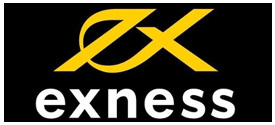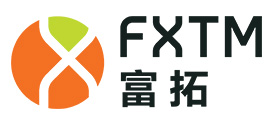|
Mastering Forex Analysis: A Comprehensive Guide The foreign exchange (forex) market is one of the largest and most liquid financial markets in the world, with trillions of dollars traded daily. Understanding forex analysis is crucial for traders aiming to succeed in this complex and dynamic environment. This guide provides a comprehensive overview of forex analysis, covering key concepts, techniques, and strategies to help traders make informed decisions. Understanding Forex Markets Before diving into analysis, it’s essential to grasp the basics of forex markets. The forex market involves buying and selling currencies, such as the US Dollar (USD), Euro (EUR), Japanese Yen (JPY), and others. Currency pairs, like EUR/USD or GBP/USD, represent the exchange rate between two currencies. Traders can trade spot forex (for immediate delivery), forex futures, or forex options, each with its own set of risks and rewards. Key Concepts in Forex Analysis 1. Market Sentiment: Market sentiment refers to the mood or attitude of traders in the market. Positive sentiment often leads to upward price movements, while negative sentiment can result in downward trends. Traders use indicators like the Fear & Greed Index to gauge sentiment. 2. Economic Indicators: Economic data plays a significant role in forex analysis. Variables like GDP, inflation rates, unemployment figures, and central bank policies can impact currency values. For example, a strong GDP report might boost a country’s currency. 3. Fundamental Analysis: Fundamental analysis involves evaluating the economic policies, fiscal health, and political stability of countries to predict currency movements. This approach is particularly useful for long-term trading. 4. Technical Analysis: Technical analysis focuses on studying price action and market trends to predict future movements. Traders use tools like trend lines, support/resistance levels, and oscillators to make informed decisions.  Technical Analysis Techniques 1. Trend Analysis: Identifying market trends is crucial in forex. Trends can be ascending, descending, or ranging. Confirmation tools like the Moving Average Convergence Divergence (MACD) and Relative Strength Index (RSI) help confirm trend strength. 2. Support and Resistance Levels: These are key price levels where supply and demand meet. Price often finds support at lower lows and resistance at higher highs. Traders use these levels to anticipate potential price reversals. 3. Moving Averages: Moving averages smooth out price data to show trends. Commonly used averages include the Simple Moving Average (SMA) and Exponential Moving Average (EMA). They help identify trend direction and potential reversals. 4. Volatility and Range: Volatility measures how much a currency pair’s price moves over a given period. High volatility means prices are swinging widely, while low volatility indicates a stable market. Tools like Bollinger Bands can help identify periods of high or low volatility. Fundamental Analysis in Forex 1. Economic Data Releases: Central banks release economic data such as GDP, inflation rates, unemployment figures, and interest rate decisions. These reports can significantly impact currency values. For example, a surprise increase in inflation might cause a currency to weaken. 2. Central Bank Policies: The decisions of central banks, such as the Federal Reserve or the European Central Bank, are closely watched. Changes in interest rates, quantitative easing (QE) programs, or currency interventions can have immediate effects on the market. 3. Political Stability: Political events, such as elections, referendums, or geopolitical tensions, can create uncertainty and influence currency values. For instance, a country facing political instability might see its currency weaken. Risk Management in Forex 1. Position Sizing: Position sizing involves determining the appropriate lot size for each trade based on account size and risk tolerance. This helps manage risk and avoid significant drawdowns. 2. Stop-Loss and Take-Profit: These are essential tools to limit losses and lock in profits. A stop-loss order automatically sells a position if the price moves against it, while a take-profit order locks in profits when the price moves in the desired direction. 3. Diversification: Traders should diversify their positions across different currencies and time frames to reduce risk. Avoiding overexposure to a single market or currency pair is crucial. Tools and Resources for Forex Analysis 1. Trading Platforms: MetaTrader 4 (MT4) and MetaTrader 5 (MT5) are popular platforms used by traders. They offer a wide range of tools, charts, and indicators to analyze forex markets. 2. Economic Calendars: These tools help traders stay updated on upcoming economic data. Services like Refinitiv or Bloomberg provide detailed economic calendars with forecasts and analysis. 3. Forex Signals and Expert Systems: Many traders use expert advisors (EAs) or forex signal providers to automate trades based on predefined rules. These systems can be useful for scalping or swing trading. 4. News and Analysis Websites: Websites like TradingEconomics, FXCM, and BabyBus provide real-time news, analysis, and charts. These resources are invaluable for staying informed about market developments. Conclusion Forex analysis is a multifaceted discipline that combines technical and fundamental approaches. By understanding market sentiment, economic indicators, and using tools like moving averages and volatility indicators, traders can make more informed decisions. Risk management is equally crucial, as forex trading carries significant risks. With the right knowledge, tools, and strategies, traders can navigate the forex market effectively and achieve consistent returns. Remember, forex trading is not about predicting the market perfectly but making decisions that capitalize on market inefficiencies. |










 备案号:
备案号:



